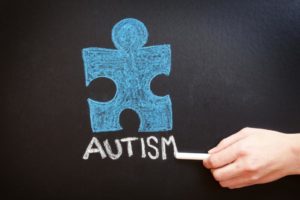 While it is not yet known what causes autism, researchers believe that a complex interaction between environmental factors and genetics is responsible for the condition. Separating these factors, however, can be a challenge. But a new study may have found a way to isolate genetics from environmental contributors to the disease, allowing researchers to focus on the link between heavy metal levels and autism risk.
While it is not yet known what causes autism, researchers believe that a complex interaction between environmental factors and genetics is responsible for the condition. Separating these factors, however, can be a challenge. But a new study may have found a way to isolate genetics from environmental contributors to the disease, allowing researchers to focus on the link between heavy metal levels and autism risk.
According to the latest data from the Centers for Disease Control and Prevention (CDC), as many as 1 in 68 children in the United States have autism spectrum disorder (ASD).
A recent study explores a new factor that may contribute to the risk of developing ASD: the concentration of heavy metals in a child’s body.
The new research was led by Manish Arora, Ph.D., an environmental scientist and dentist at the Icahn School of Medicine at Mount Sinai in New York City, NY, and the findings were published in the journal Nature Communications.
As the authors of the new study explain, there have been previous studies that have investigated the relationship between toxic metals, essential nutrients, and the risk of having ASD, but these studies were limited due to the imperfect means of assessing metal concentrations.
For instance, such studies have had to approximate the toxic metal exposure based on the metal concentrations in the bloodstream. However, this estimation was done after the children had already been diagnosed with ASD, rather than before.
Additionally, some of these studies were not able to account for genetic factors that may have influenced the results; generally, separating environmental factors from genetic ones in the development of autism is challenging for researchers.
The method used in this new study, however, manages to bypass many of these limitations. By looking at naturally shed baby teeth, the researchers explain, they have access to information that goes as far back as a baby’s prenatal life. And by studying twins, Prof. Arora and colleagues were able to separate genetic influences from environmental ones.
Using baby teeth to measure exposure to metals
To determine how much metal the babies’ bodies contained before and after birth, the researchers used lasers to analyze the growth rings on the babies’ teeth.
Laser technology allowed the scientists to accurately extract specific layers of dentine, which is the substance that lies beneath the tooth enamel.
In much the same way that we can tell the age of a tree by looking at the growth rings in a cross-section of its trunk, the scientists were able to see different developmental stages correspond to different rings by looking at a cross-section of the babies’ teeth.
This correspondence between growth dentine layers, their levels of lead, and the exposure to lead during different developmental stages, has been previously demonstrated by Prof. Arora and team in research they carried out previously.
Cindy Lawler, Ph.D., head of the National Institute of Environmental Health Sciences (NIEHS) Genes, Environment, and Health Branch, explains the importance of using this scientific method for studying autism:
“We think autism begins very early, most likely in the womb, and research suggests that our environment can increase a child’s risk. But by the time children are diagnosed at age 3 or 4, it’s hard to go back and know what the moms were exposed to. With baby teeth, we can actually do that.”
The researchers looked at the teeth of 32 pairs of twins, as well as separately studying the teeth of 12 individuals from twin pairs.
The scientists were able to compare tooth development patterns and metal concentrations in pairs of twins in which only one twin had ASD, in twins that both had the disorder, and in pairs in which neither of the twins had ASD.
Heavy metals, or body’s ability to process them, may affect ASD risk
In pairs comprising only one twin with ASD, the teeth revealed larger differences in metal uptake levels.
The study revealed that children with ASD had much higher levels of lead throughout their development.
The greatest difference between lead levels in children with ASD and children without was noticed during the period after birth.
Zinc levels, on the other hand, displayed a more complex pattern. During the prenatal period, children with ASD had lower levels of zinc, but after birth, these levels increased to higher levels than those found in children without ASD.
Finally, manganese was found to correlate with ASD as well. Children with ASD seemed to have less manganese than children without, both pre- and postnatally.
Overall, the study suggests that either prenatal exposure to heavy metals, or the body’s ability to process them, may influence the chances of developing autism.
“A lot of studies have compared current lead levels in kids that are already diagnosed,” Lawler says. “[But] being able to measure something the children were exposed to long before diagnosis is a major advantage.”
David Balshaw, Ph.D., head of the NIEHS Exposure, Response, and Technology Branch, also weighs in on the scientific method used for this study, saying, “There is growing excitement about the potential of baby teeth as a rich record of a child’s early life exposure to both helpful and harmful factors in the environment.”
Prof. Arora called the method “a window into our fetal life.” He and his colleagues note, however, that more large-scale studies are needed to replicate and confirm their findings.
Medical News Today JO.






